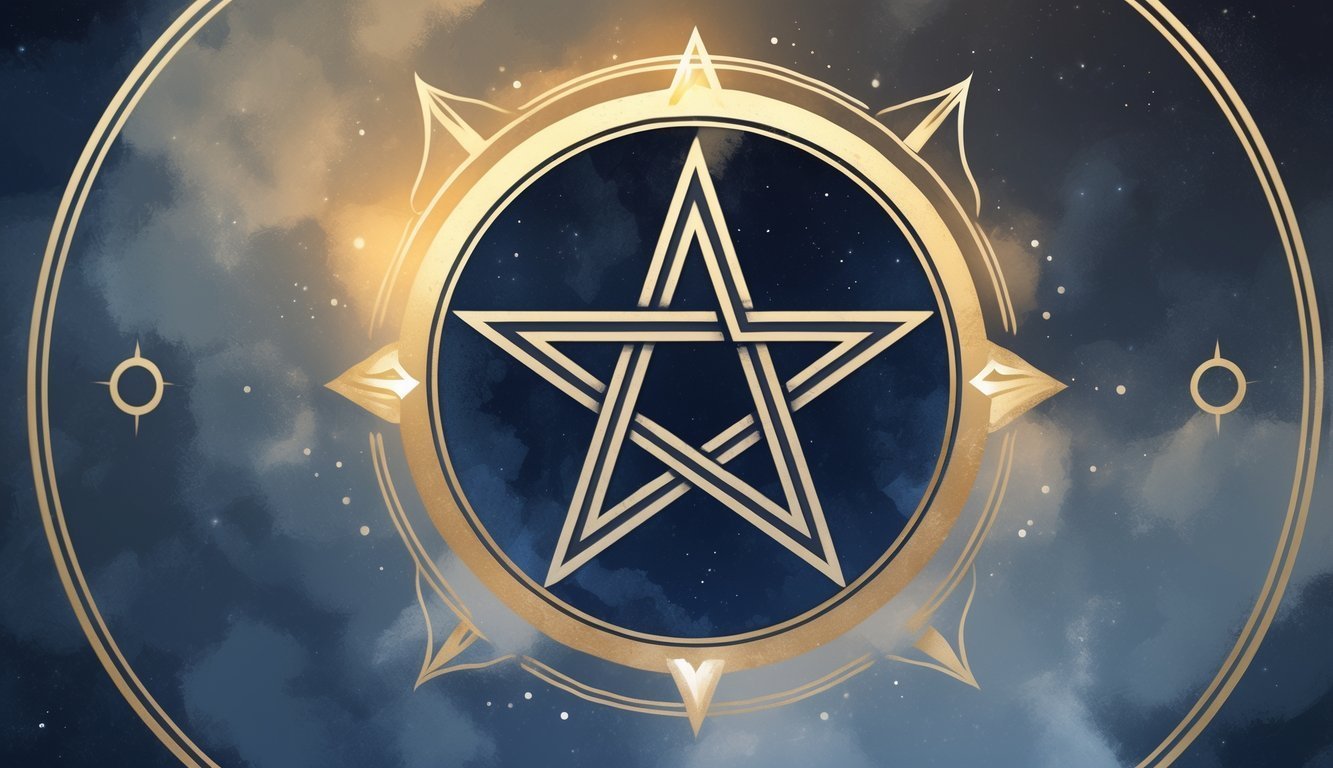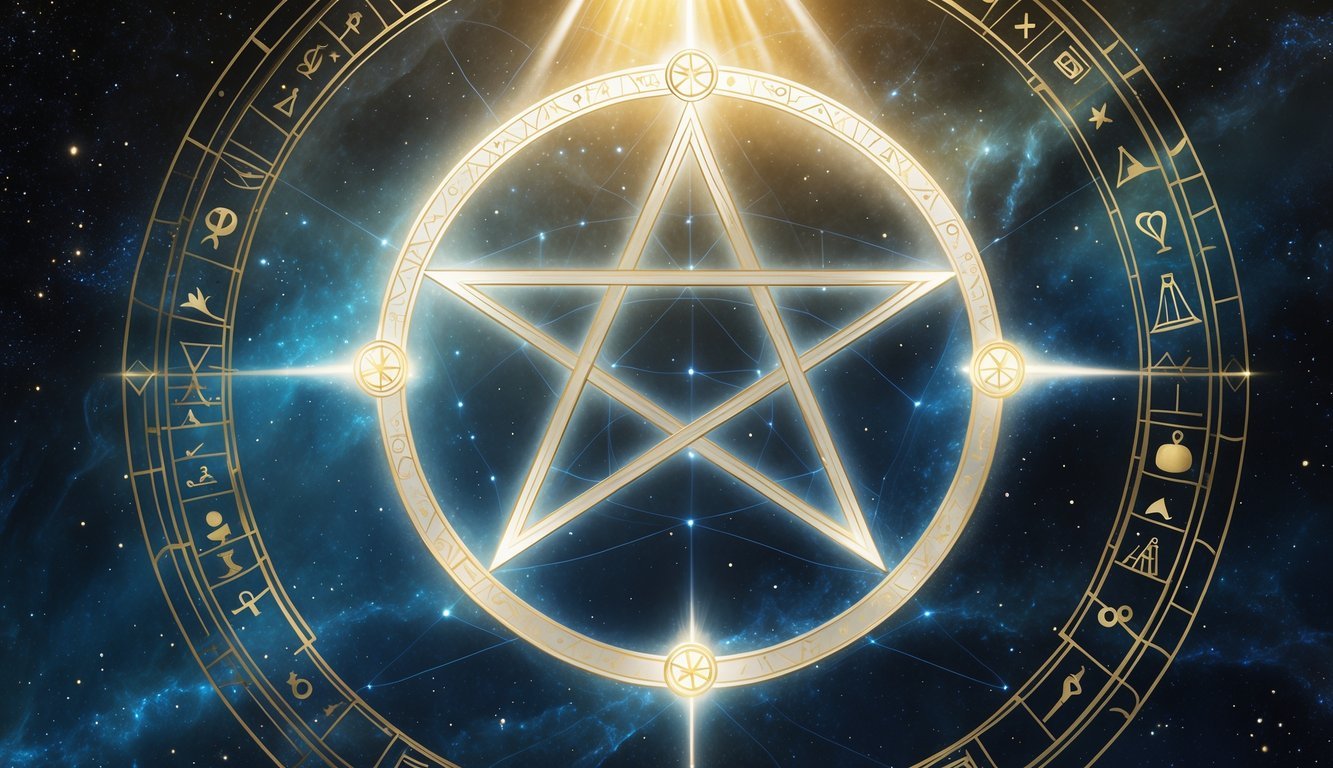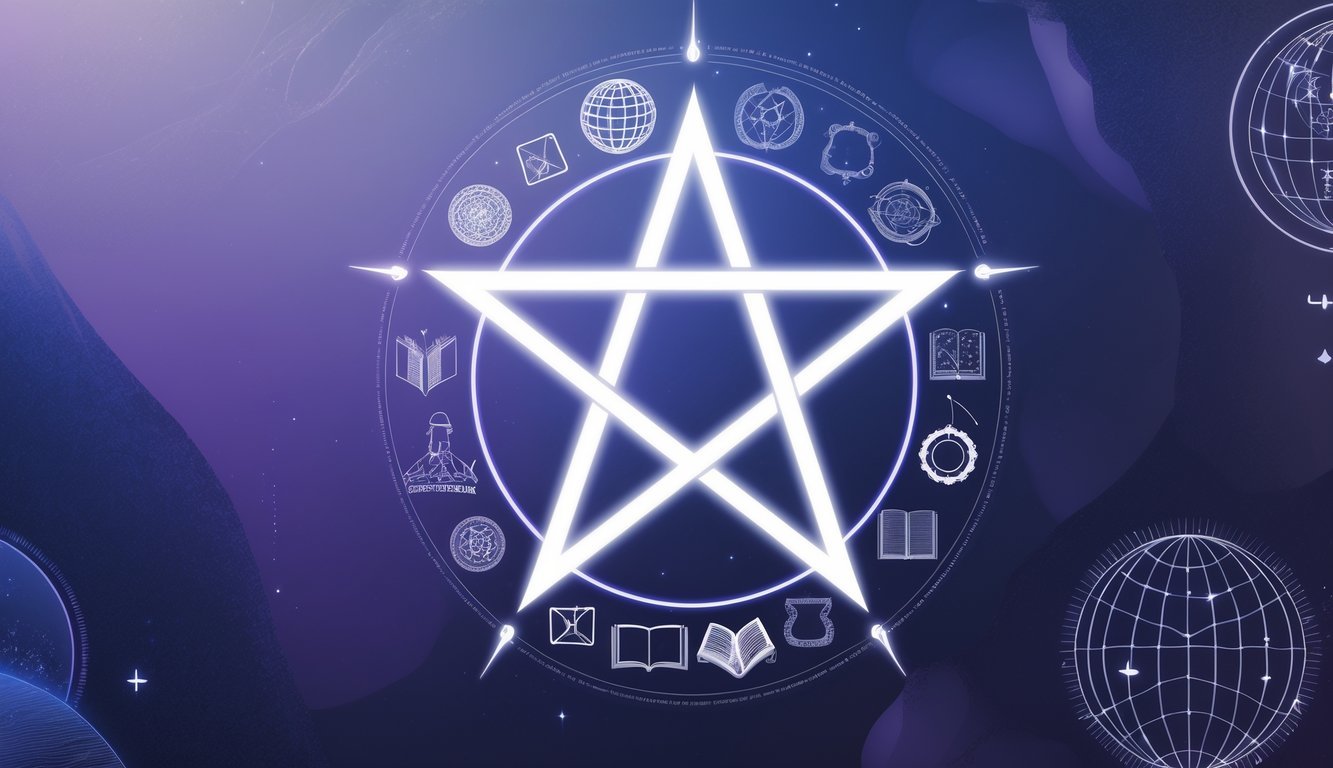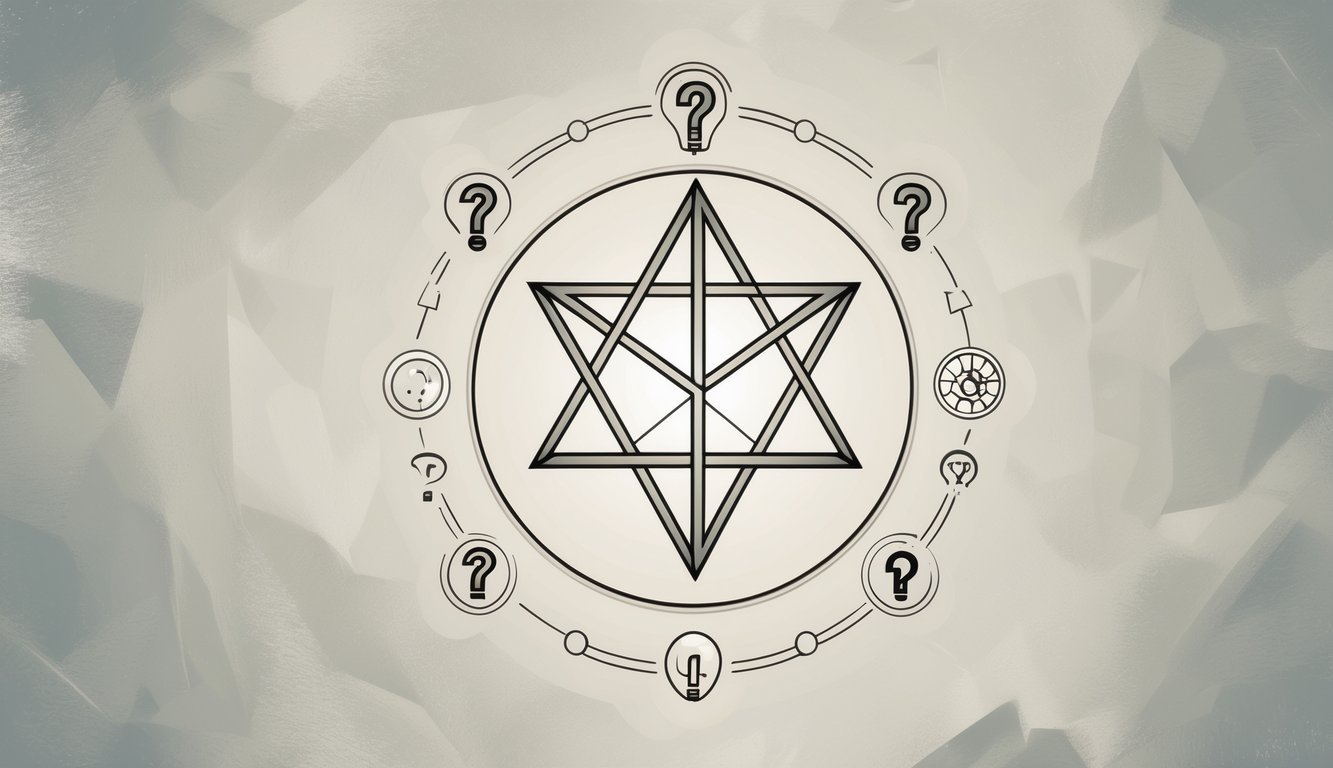PsychNewsDaily Publishers
100 Summit Drive
Burlington, MA, 01803
Telephone: (320) 349-2484
PsychNewsDaily Publishers
100 Summit Drive
Burlington, MA, 01803
Telephone: (320) 349-2484
The pentagram, a five-pointed star, symbolizes protection, balance, and natural elements, with varying meanings across cultures and spiritual traditions throughout history.

The pentagram is a five-pointed star, and people have used it as a symbol for centuries. It usually stands for ideas like protection, balance, or the elements of nature, though the meaning shifts with culture and context.
You might spot it as a simple star, but there’s more going on beneath the surface. Honestly, it’s a symbol that’s sparked a lot of curiosity over the years.
You’ll find the pentagram in all sorts of traditions, from ancient religions and witchcraft to Christianity. Sometimes, people say it stands for the spirit ruling over matter, or the harmony of earth, air, fire, water, and spirit.
If you know these meanings, you’ll probably get why the pentagram still pops up everywhere today.
Whether you see it in art, jewelry, or stories, the pentagram kind of invites you to look deeper. It offers a peek into the beliefs of all sorts of groups.
Learning about its meanings can give you a better view of how symbols shape our world.

The pentagram, a five-pointed star, has a history that stretches back across many cultures and ideas. People have used it as a symbol of protection, truth, and the natural world.
Its meanings have shifted a lot between spiritual beliefs and religious uses.
The pentagram dates back thousands of years. People in ancient Mesopotamia and Babylonia connected it to the planet Venus and the number five.
They admired its shape for its link to the golden ratio. For them, it meant perfection and balance.
In ancient Greece, folks called it a “pentalpha” because it looks like five letter A’s joined together. Pythagoras and his followers picked it as a symbol for knowledge and mathematical harmony.
They also saw it as a sign of health and the human body, thanks to those five points.
The pentagram often stands for the five elements: earth, air, fire, water, and spirit. In many pagan traditions like Wicca, it means balance and unity with nature.
You’ll find people using the pentagram in rituals as a protective talisman.
Within these beliefs, the pentagram honors the connection between the physical world and the spiritual. The circle around the pentagram, which people call a pentacle, highlights this unity and protection.
Some pagans even see it as a sign of the Triple Goddess and the Horned God, who are important in their worship.
Early Christians used the plain pentagram (without a circle) to represent the five wounds of Jesus from the crucifixion. For them, it was a symbol of Christ’s sacrifice and protection.
Sometimes, they linked it with the Star of Bethlehem or the Virgin Mary.
Later on, the pentagram picked up negative meanings in Christian circles, especially when inverted (one point down). The upside-down pentagram became a sign of evil, the Devil, or demonic forces.
Groups like the Church of Satan use an inverted pentagram (often called the Sigil of Baphomet) as a symbol of rebellion against traditional Christian ideas.
| Meaning | Point Direction | Use and Interpretation |
|---|---|---|
| Upright Pentagram | One point up | Protection, five wounds of Christ |
| Inverted Pentagram | Two points up | Devil worship, Satanism |

The pentagram still shows up everywhere today. People see it as a symbol with all sorts of meanings, from magic and protection to religious and cultural ideas.
You’ll find the pentagram in magical practices, on religious items, and even in pop culture.
In magic and occult traditions, the pentagram stands as a strong symbol. It represents the five elements: earth, air, fire, water, and spirit.
That’s why it’s important in rituals and spells.
Many witches and neo-pagans, like Wiccans, use the pentacle (a pentagram inside a circle) as a talisman. They believe it protects against evil spirits and brings balance.
You might also hear about the Sigil of Baphomet—that’s a pentagram turned upside down, used by the Church of Satan with meanings tied to black magic.
Historical figures like Éliphaz Lévi and Heinrich Cornelius Agrippa shaped how people see the pentagram in magic. They carved it into objects or drew it in ceremonies to guard against harm.
Today, you’ll spot the pentagram outside of magical circles, too. It shows up in art, architecture, and even religions like the Bahá’í Faith, where the star (the Haykal) stands for humanity and God’s presence.
The pentagram pops up in stories like Sir Gawain and the Green Knight, a Middle Ages tale where it stands for the virtues of knighthood.
In modern times, you might see it in tattoos, jewelry, or logos, where it can mean justice, freedom, or courage.
Some groups see the pentagram as a sign of feminine or masculine energy, peace, or health. Others might find it controversial because of its ties to the occult or misunderstood beliefs.
But honestly, knowing its wide range of meanings helps explain why so many people use the pentagram in different ways around the world.

A pentagram means different things depending on how people use it. It often connects to the elements of nature, spiritual ideas, and certain ritual practices.
In witchcraft, the pentagram usually stands for the four elements: earth, air, fire, and water. The fifth point means spirit, showing how these elements come together.
An upright pentagram has one point at the top and is seen as positive, symbolizing balance and protection. An inverted pentagram points down and is often linked to darker or misunderstood meanings, but not always evil.
The pentagram itself didn’t start out as a satanic symbol. Some groups later used an inverted pentagram, but its older meanings come from natural and spiritual ideas.
People use the pentagram for protection, to call on elemental energies, or as a symbol of faith in traditions like Wicca. It can also mark sacred spaces or tools.
When a pentagram sits inside a circle, people call it a pentacle. The circle usually adds a sense of unity and protection, linking the star to wholeness and cycles.
These days, the pentagram pops up a lot in stories about magic and the supernatural. People usually see it as a symbol of power, mystery, or even protection in books and TV shows.
Honestly, it’s hard not to notice how often writers use it to set the mood or hint at hidden forces.